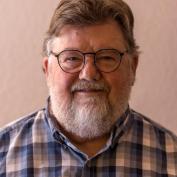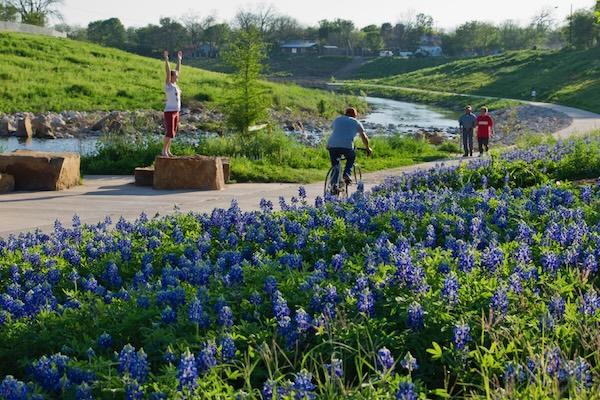
San Antonio won second place in the 2025 iNaturalist City Nature Challenge among nearly 700 cities globally. DFW ranked 5th. Above, the River Walk Mission Reach Trail in San Antonio. Photo courtesy of VisitSanAntonio.com.
Despite all the concrete and traffic, turns out Texas cities are teeming with biological diversity.
A national bioblitz hosted by iNaturalist proved that last month.
During the nonprofit's recent City Nature Challenge competition, people from 669 cities across the world scoured their communities to find the most species of flora and fauna during a four-day event. The event was hosted by iNaturalist, an online social network catering to nature lovers, researchers and citizen scientists.
La Paz, Bolivia got the most observations with 149,418 species documented.
San Antonio came in second among the nearly 700 cities that participated,, with 134,713 observations of plants and animals.
Dallas-Fort Worth ranked fifth, with more than 72,000 observations. Those observations documented over 3,800 species of living things right here in DFW’s patches of nature, parks, and back yards. Nearly 2,000 observers participated in DFW, both amateurs as well as professionals.
Houston and Austin also had good showings, finishing in 11th and 12th places.
WHY BIOBLITZES ARE NEEDED
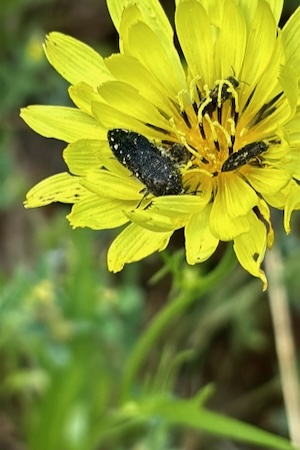 Metallic wood-boring beetles in a chicory flower. Photo by Michael Smith.
Metallic wood-boring beetles in a chicory flower. Photo by Michael Smith.
How does a bioblitz work, and why is it important?
When a group of people work to document as many species as possible in a particular area, over a short period of time, it’s called a “bioblitz.” It’s a good way to document the variety of animals, plants, lichens and mosses in an area. When you get lots of people looking for wildlife — be it plant, animal or fungi — they’ll find thousands of species.
And when the identity of those species can be confirmed, the data from a bioblitz can be used in science.
When everyday people use tools like iNaturalist to document what they see in nature, it’s referred to as citizen science or community science. And that’s hugely important to our understanding of life on earth, because there are only so many scientists to go around, and only limited funds to pay for travel, equipment and professional skills.
If we all get in the act, we can expand scientific understanding.
SOCIAL NETWORK FOR NATURALISTS
iNaturalist is partly social media for nature folks, a way to post photos or recordings of what we’ve seen in nature and share them with like-minded folks, and partly a scientific database for our observations to be confirmed by experts and archived.
“Knowing the name of something changes your relationship to it,” says Sam Kieschnick, an Urban Wildlife Biologist with Texas Parks and Wildlife Department. “Once you learn the name of something, it opens the door to learning more about it, how it lives and the things it eats. So iNaturalist is a tool I use to deepen my relationship with nature.”
USING INATURALIST
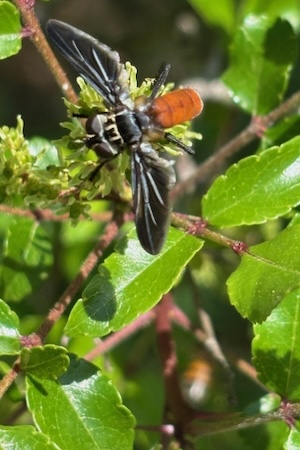 A bristlefly documented with iNaturalist by the reporter. Photo by Michael Smith.
A bristlefly documented with iNaturalist by the reporter. Photo by Michael Smith.
Here’s how to make an observation: As I walk along the trail I see some sort of fly with a red abdomen and black wings, feeding on tiny flowers. I take a photo with my iPhone (can also use an Android phone) and upload it to my iNaturalist account, where it is shared with the community.
A powerful computer algorithm tells me it is probably a kind of bristle fly. They are harmless and colorful, and their larvae live in a sort of parasitic relationship to bugs like stink bugs and squash bugs. Experts in the community confirm that it is indeed a bristle fly.
So now we know what it was, and that it was seen on April 15, 2025 at 2:21 p.m. at Sheri Capehart Nature Preserve in Arlington.
The app uses the metadata recorded with the photograph, but if I took the photo with a different camera and uploaded it later, using the desktop version of iNaturalist, I could enter any missing information such as the exact location.
Users of iNaturalist can set up “projects” to pull together observations of particular kinds of organisms (like “Insects of Texas”) or the biodiversity of a particular place (like “Sheri Capehart Nature Preserve”). Projects like those can help the scientific community to find and use my observation of that bristle fly if it’s relevant to what they are studying.
CITY NATURE CHALLENGE
Efforts like the City Nature Challenge help us understand and appreciate biodiversity, all those animals, plants and other kinds of life found in the world.
Why is biodiversity important? It takes many kinds of living things to work together to make Earth livable. That means livable for us, too. The various species provide food for other organisms, they return dead tissue to soil, some of them provide medicines for human use, and have many other uses.
The City Nature Challenge was born in 2016, with eight days of friendly competition between Los Angeles and San Francisco, organized by the California Academy of Sciences and the Natural History Museums of LA County. The thousand or so people collected 20,000 observations. The next year, it became a national competition and DFW took first place among 14 metropolitan areas in the U.S.
In 2018, the contest went global. Now it is an annual four-day event with 102,945 people participating this year.
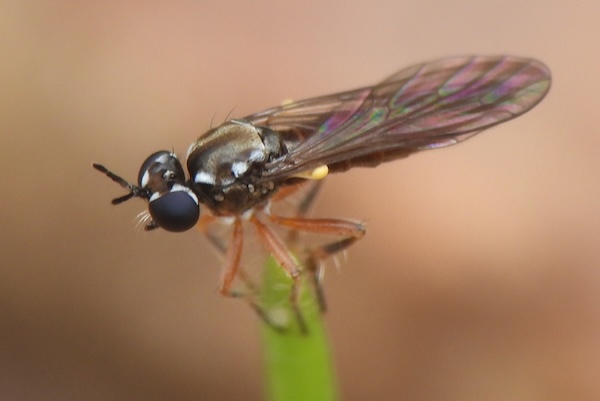 The Micro Pirate robber fly photographed for the first time by Sam Kieschnick. Photo by Sam Kieschnick.
The Micro Pirate robber fly photographed for the first time by Sam Kieschnick. Photo by Sam Kieschnick.
Kieschnick, who's among the Top Ten iNaturalist Observers in the world, spent this year’s City Nature Challenge in various DFW green spaces.
“I did pretty good. I documented about 870 species in just over a thousand observations. And I wasn’t even close to the top observer.”
He was happy about not being at the top, because it meant that so many people were seriously involved in finding nature.
“I was number 8. I love it!”
One of his observations was especially significant.
“I went to Thora Hart Park in Arlington, with about 10 acres. It has deep sand, and I got several lifer species. I was sitting down there on the sand looking at tiny bugs, and I documented a little robber fly, called the Texas Micro Pirate. This little guy is 3 millimeters long. I had no idea what it was,” until posting it on iNaturalist and hearing from a robber fly expert. It turned out that “this was the first living photograph of this fly!”
WHO ARE THE OBSERVERS?
The participants include folks with a beginning interest in nature, as well as researchers and wildlife professionals like Kieschnick. I know people who put this on their calendars and take time off from work for the whole four days.
But people who document only a handful of observations are important, too. It is enjoyable and important to invite them in, provide mentoring, and encourage their involvement at whatever level they choose. For example, the Friends of Sheri Capehart Nature Preserve offers periodic walks called Know Your Nature Neighbors. The walks are intended for beginners or casual nature enthusiasts. They can walk with an experienced naturalist who can help them get started using iNaturalist and find lots of species.
Everyone is welcome because it is encouraging and fun to observe things in the company of other naturalists. And for Kieschnick, it’s important for other reasons, too.
“I will argue that the most relevant data point to me as an Urban Wildlife Biologist was the number of observers. It gives empirical evidence that there is a naturalist community in DFW. It is a constituency of people that are actively seeking out places to engage with nature. There were 1,868 nature enthusiasts. Nature is important to the people of North Texas.”
And that should translate into policy decisions to take good care of our parks and preserves.
Here is an example of how a few people can make a difference, even if they documented only a few observations. The Texas Garter Snake is a small harmless snake found in North and Central Texas, and it is considered “critically imperiled.” The species is so hard to find that a 2019 study failed to find any in the field and had to use museum specimens and archival data. Archival data could include observations to iNaturalist.
I decided to check on whether any Texas Garter Snakes were documented in North Texas during the City Nature Challenge this year. The iNaturalist records showed that yes, two people uploaded observations of Texas Garter Snakes (with confirming photos) during that time. Maybe those observations will help make possible some future study of this imperiled species.
KEEPING IT GOING
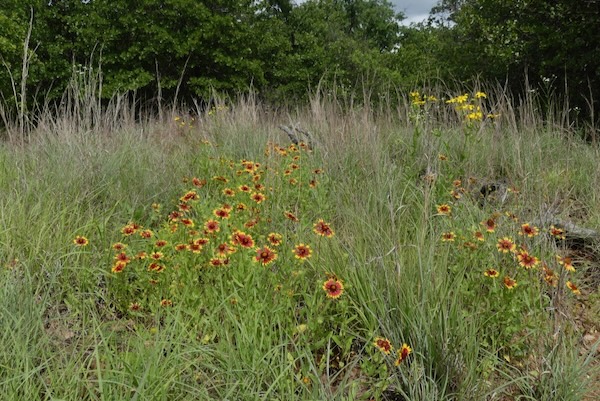 Wildflowers observed in a meadow, including Firewheel, Engelmann's Daisy and Little Bluestem grass, at Sheri Capehart Nature Preserve. Photo by Michael Smith.
Wildflowers observed in a meadow, including Firewheel, Engelmann's Daisy and Little Bluestem grass, at Sheri Capehart Nature Preserve. Photo by Michael Smith.
Any of us can contribute to community science any time, even though the 2025 City Nature Challenge is over (but mark your calendars, it’s scheduled for April 24-27 next year). In the process of getting out there, we experience all the benefits of time spent in nature.
Kieschnick described one way the participants benefited from being out there.
“We were so focused on nature, that just for a moment as we’re listening to the birds, as we’re looking at bugs, all the chaos of the rest of the world — it just isn’t as loud on this weekend at City Nature Challenge because we’re focused on nature.”
He went on to describe the DFW urban ecology as a mosaic of roads, stores and houses but also speckled with all of these green areas.
“I am uplifted by going out to some of these little green spots in the urban ecosystem and seeing life persist and strive in those areas, and to see my fellow naturalists join me in those areas.”
Lots of preserves and nature centers offer activities and would be glad to see you contribute to community science, and even help you get started.
In Fort Worth, those places include the Fort Worth Nature Center and Refuge and Tandy Hills Natural Area.
Between Dallas and Fort Worth, there is the Sheri Capehart Nature Preserve, where I’m a board member, River Legacy Nature Center and Dogwood Canyon Audubon Center and to the north Lewisville Lake Environmental Learning Area and Bob Jones Nature Center.
In the Greater Dallas area, there is the Trinity River Audubon Center, Spring Creek Forest and John Bunker Sands Wetland Center.
That only scratches the surface. You’ll find a really useful guide to all the nature spots in the DFW area in Amy Martin’s book, Wild DFW: Explore the Amazing Nature In and Around Dallas-Fort Worth.
RELATED ARTICLES
North Texans gearing up for City Nature Challenge
DFW wins nationwide iNaturalist Challenge
